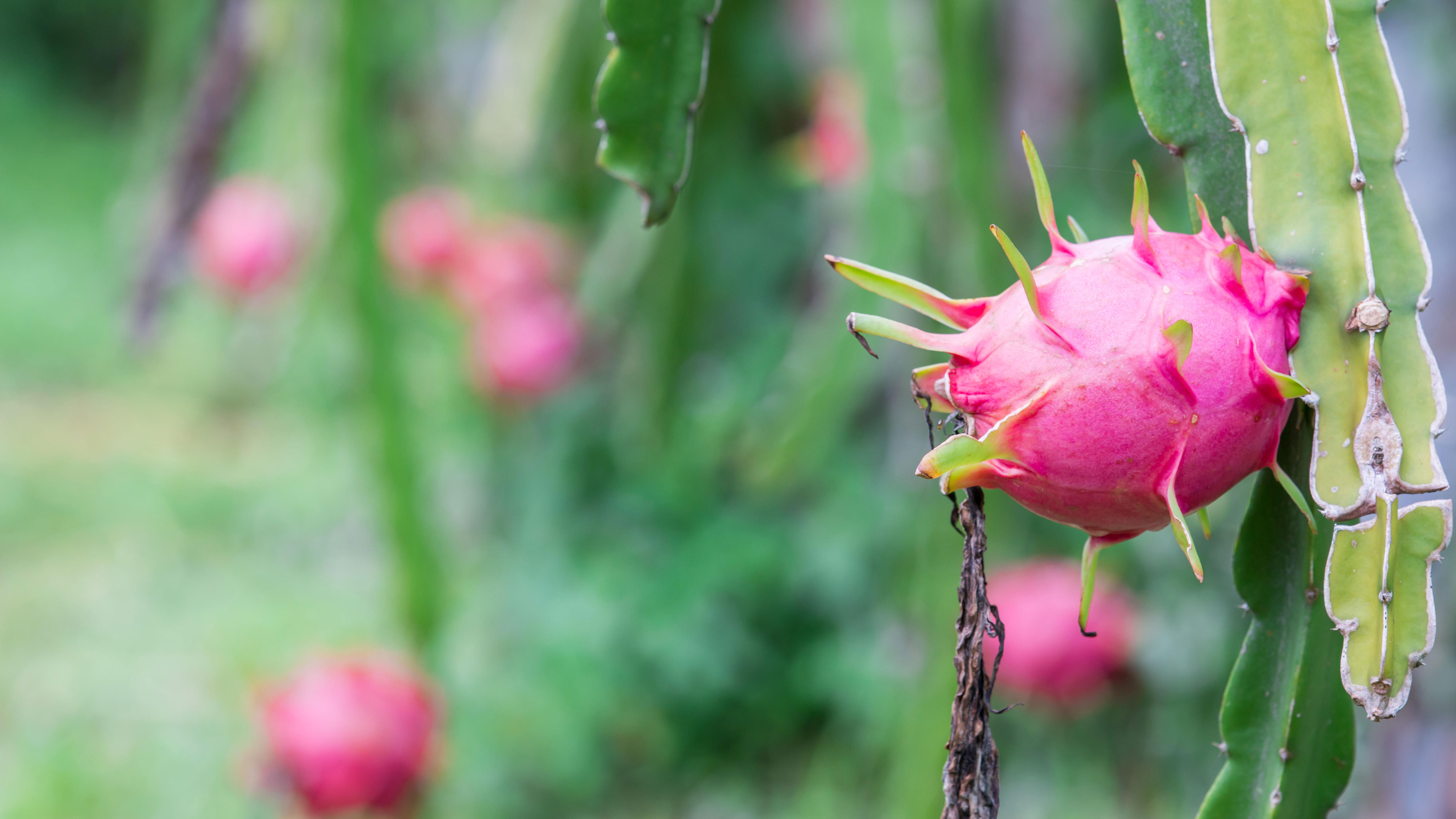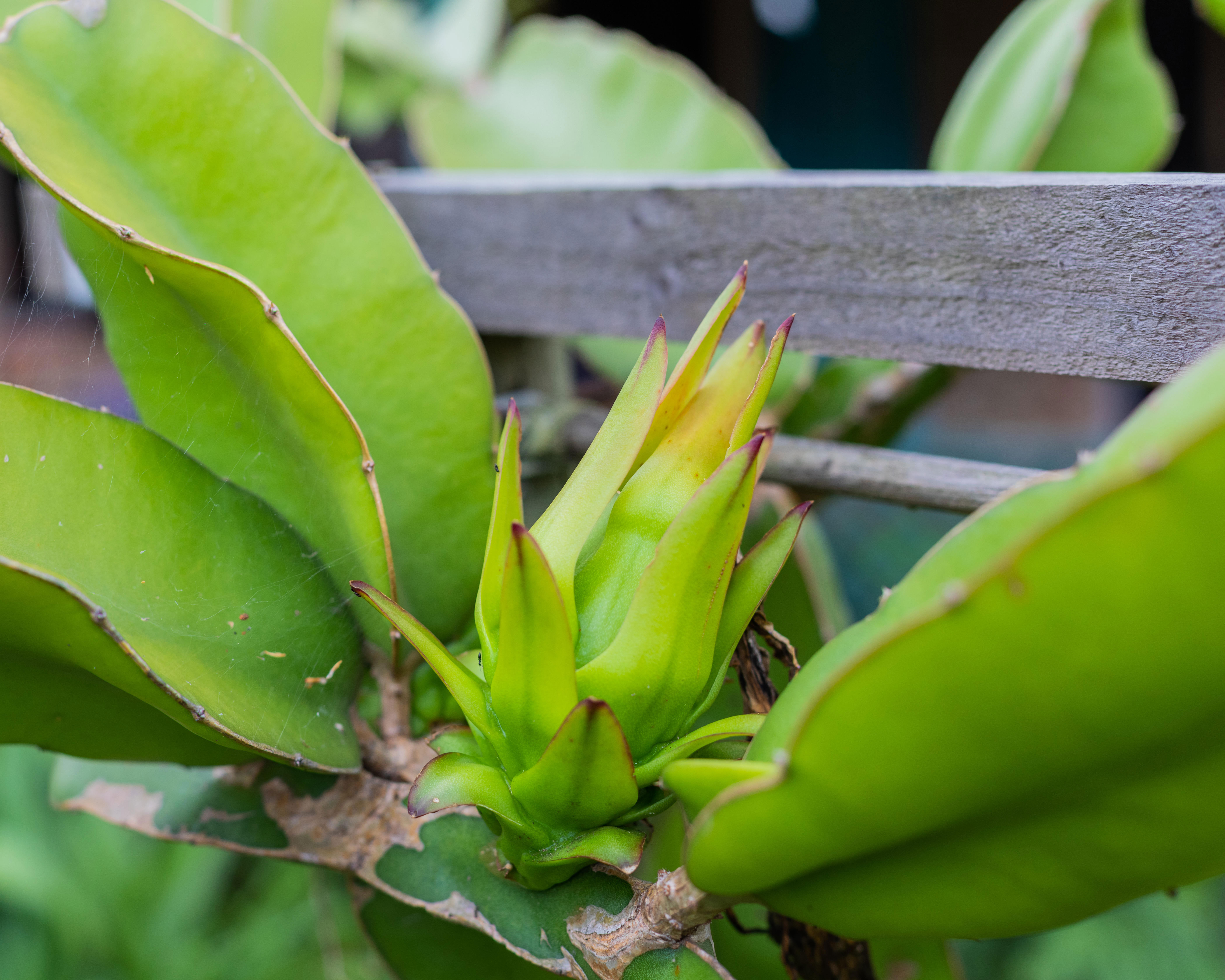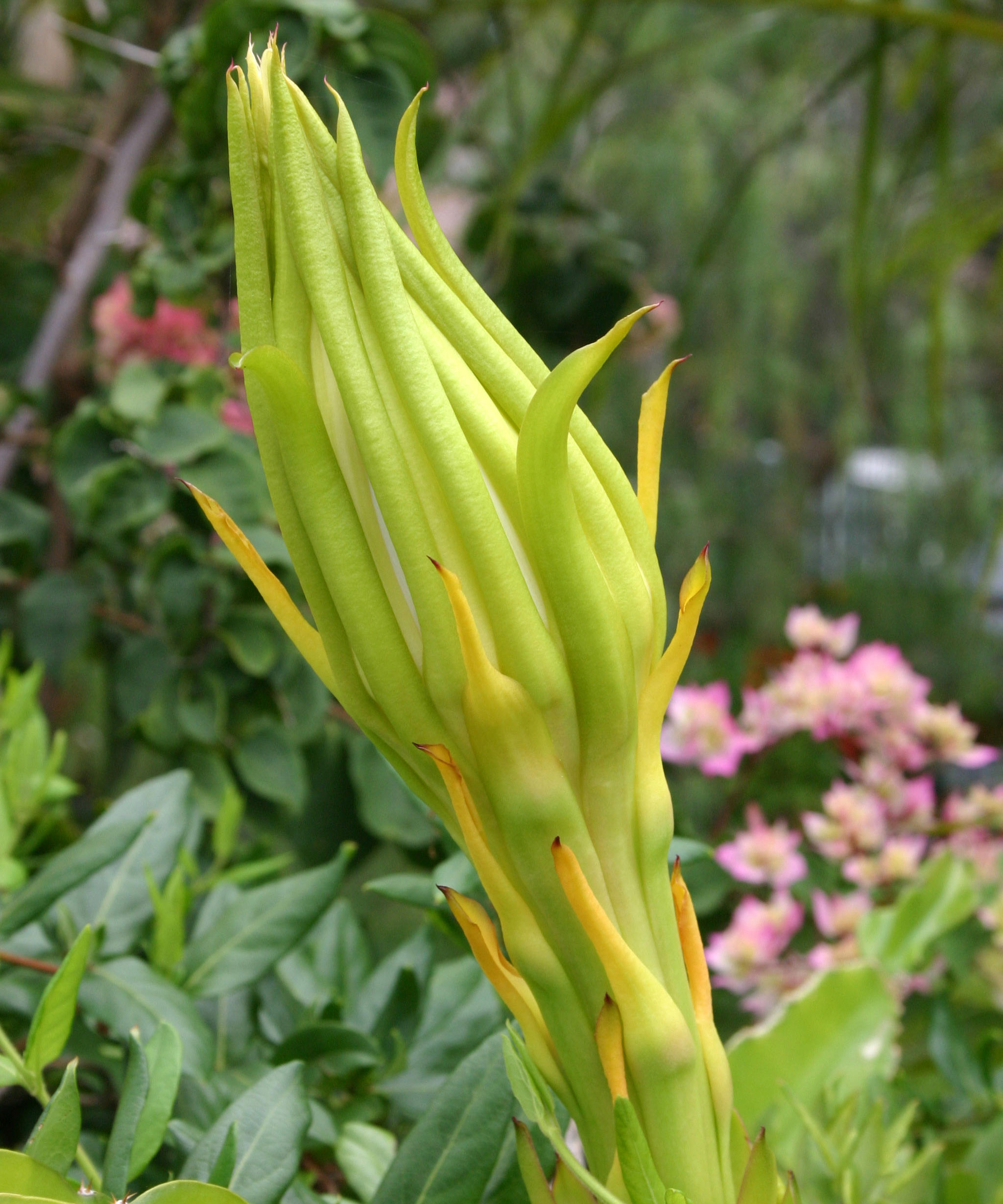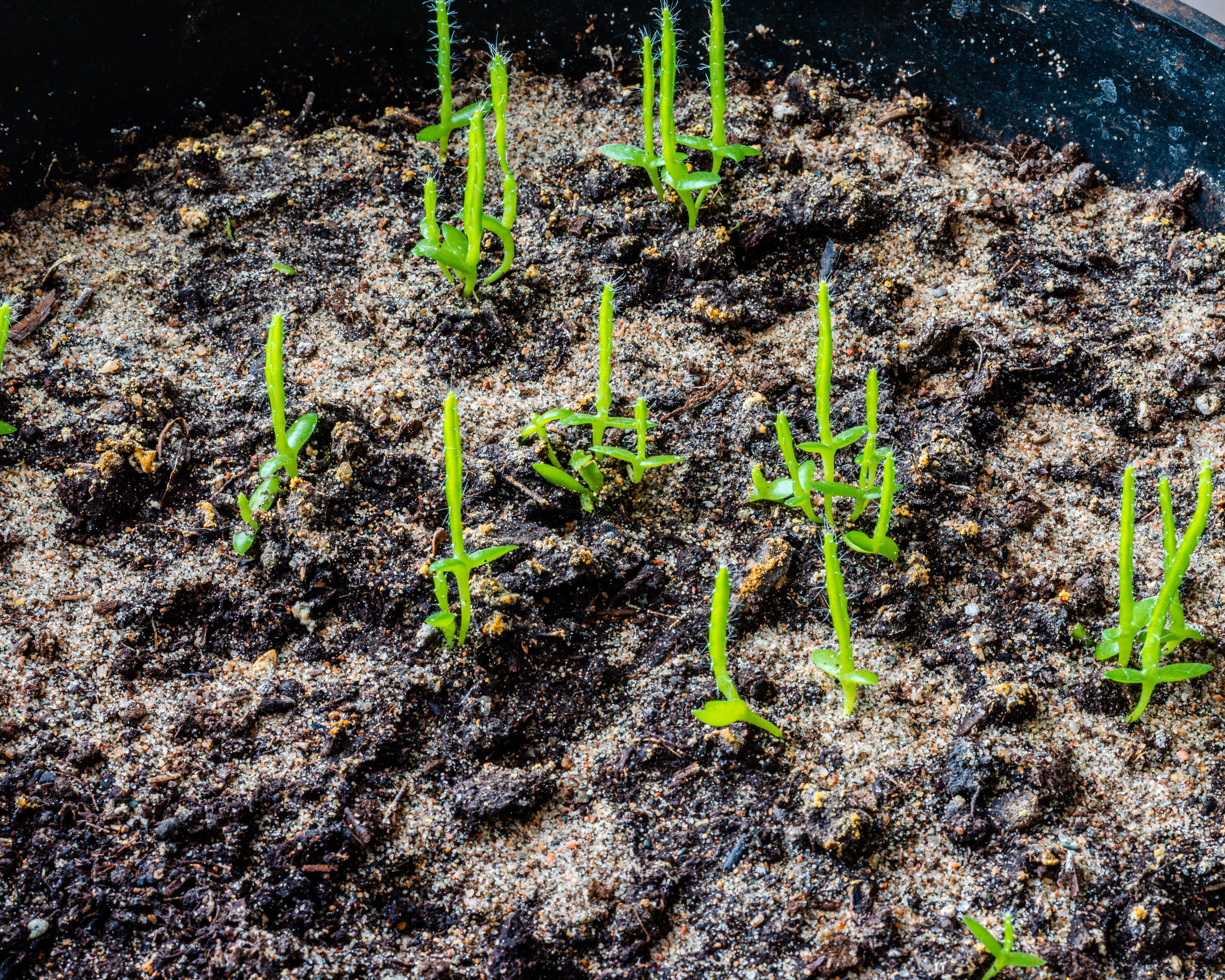How to grow dragon fruit – both indoors and outside
Follow this simple guide on how to grow dragon fruit for a successful crop of this exotic and beautiful fruit


A less usual homegrown fruit to try, learn how to grow dragon fruit and you will be delighted by the resulting, tasty fruits of this exotic plant.
The flowers of the dragon fruit are some of the largest in the world. They bloom only at night, adding to their mysterious beauty. They must be pollinated by a different dragon fruit plant, so it is necessary to grow at least two to ensure that your flowers turn into fruit, which you can grow alongside other sunshine loving fruit trees, in the garden or indoors.
Dragon fruit is actually a tropical fruiting cactus originating from Central and South America. They therefore require more frequent watering, and a soil that is a little damp, unlike desert cactuses that thrive in very dry soil.
A dragon fruit grown in optimum conditions can grow up to 10 foot (3 meters) in a single year, so a striking addition for tropical garden ideas.
How to grow dragon fruit – outside or under cover

Dragon fruit, or pitaya are a warm climate fruit and will grow faster, and produce a better crop, in warmer zones. If you want to try growing them in cooler areas, they will need to be grown inside, in a heated environment.
It is possible that they would grow happily under glass if you're planning a greenhouse in USDA zones 8 and 9, but they are very unlikely to bear fruit without additional heating. You can grow them in your house, providing you can give them a very sunny spot with at least 6 hours of sunlight a day.
They are epiphytic, meaning that they grow up other plants, and will therefore need a support when being grown at home.
Make sure that the pole or support is very sturdy as the plants will grow large and heavy. Ensure that the root system has lots of space to develop.
It is best to grow dragon fruit in the ground, rather than in pots, but if you do choose to grow them in a pot as part of your vegetable garden container ideas, or under glass, then choose a very large pot.
Trim off any side growth until the plant reaches the top of the support and then allow it to start to hang and branch. Ensure that the stem is securely attached to the upright support, in a way that will not damage the plant. A wooden frame at the top works well, so the plants can rest against it without being constricted.
‘I love dragon fruit because they perfectly cross the boundary between beautiful architectural indoor plant and inspiring food plant,’ says Lucy Hutchings of She Grows Veg and author of Get Up and Grow.
‘They are fast growing, so a great choice for the impatient gardener and are about the easiest thing to propagate. The flowers are huge, and the fruit is delicious. What’s not to love!' she continues.
Pollinating dragon fruit plants

As you learn how to grow dragon fruit you will realise that cross-pollination is the best way to ensure fruit set, so you need two dragon fruit plants. Some varieties are better suited to pollinate one another. ‘Hylocereus purpusii and Hylocereus undatus are the dragon fruit most commonly cultivated,’ says Lucy. They are used both as ornamental flowering vines and a fruit crop.
She recommends hand pollinating dragon fruit as they are pollinated by bats and moths in the wild. If you are growing them indoors, they will need some help – do this using a soft paintbrush to transfer pollen from one plant to another.
How to grow dragon fruit from cuttings

Dragon fruit can be grown from seed or from a cutting. If you are growing them in cooler zones – anything below USDA zone 10 – it would be best to grow them from cuttings or already established plants to get ahead a bit.
Dragon fruit is easy to grow from cuttings and will crop faster than when they are grown from seed. Here is how to plant dragon fruit cuttings:
- Take a 4–5-inch section of branch from a mature plant. This can be the tip of the stem, or a section from the middle, meaning you can take several cuttings from one branch.
- Leave your cutting somewhere warm and dry for 4-7 days to allow the end – or ends – to dry; this ensures that they will not succumb to fungal infection.
- Place your cutting upright into a pot of well drained potting soil – add some sand or grit to improve drainage if necessary.
- Water every 2 to 4 weeks, keeping the substrate moist but not damp.
Your cutting should take root, and you can continue to grow it on in the same pot and substrate. The time it will take to root will depend on the temperature. If you are able to keep it somewhere warm, rooting will take place faster, but it will need more regular watering to ensure it stays moist.
How to grow dragon fruit from seed

Dragon fruit seeds can be harvested straight from the fruit. It is easy and cost effective, and you can grow many hundreds of plants from just one fruit.
To grow dragon fruit from seed:
- Cut a dragon fruit in half and scoop out some of the flesh and seeds.
- Place the flesh and seeds in a sieve and run it under the tap to separate the flesh from the seeds.
- Sow the seeds into deep trays or pots and cover with a fine layer of potting compost.
- When they are a few inches tall, transfer them into individual pots, being careful not to harm the roots. It helps to use a cocktail stick or the tip of a pencil to tease the roots out.
- When the plants are a bit bigger, they will also need bigger pots. Dragon fruit like large, deep pots. This will mean that they can stay in the same pot for several years.
Is dragon fruit easy to grow?
Dragon fruit is easy to grow, 'but many problems growing dragon fruit come from them being in pots that are too small,' explains Kevin Espiritu from Epic Gardening in San Diego.
‘Dragon fruit want a big pot. I would recommend a pot that’s at least 20 gallons,’ he adds. 'I prefer to use terracotta pots for my dragon fruit as they help with drainage, but you can use plastic pots if you want – you just have to watch your watering.’
Overwatering is another big problem when growing dragon fruit. They are a tropical cactus, so require more water than desert cactuses, but over watering can lead to the stem rotting.
To ensure that you are not overwatering your plant, dig your finger a few inches down into the soil. If it feels damp, don’t water. If it feels dry, give it an inch or so of water, and then wait for it to dry out before watering again.
Dragon fruit can be difficult to bring to flower. Kevin recommends removing the top inch of growth if the plant is large, with a lot of vegetative growth, but no flowers, 'Cutting it back sends a message to the plant that if it has the potential, it should produce some fruit to ensure its survival for another generation,' he explains.
What climate do you need to grow dragon fruit?

Climate is an important factor in growing dragon fruit. They are a tropical cactus, so they are best suited to growing in tropical climates. Many people will be able to grow the plants in colder climates, but they may never get any fruit.
Dragon fruits need temperatures consistently above 40°F (4°C), but they will prefer higher temperatures, around 70°F (21°C) or higher.
Sign up to the Homes & Gardens newsletter
Design expertise in your inbox – from inspiring decorating ideas and beautiful celebrity homes to practical gardening advice and shopping round-ups.

Becky is a freelance writer, blogger, and podcaster. Her blog, Sow Much More and her podcast The Seed Pod are aimed at making organic gardening more accessible and encourage others to grow their own food.
-
 How to clean a patio – 6 different methods, and when you must use a chemical cleaning agent
How to clean a patio – 6 different methods, and when you must use a chemical cleaning agentFrom manual scrubbing, natural solutions or calling in the pros, industry experts reveal the benefits and considerations of each method
By Andy van Terheyden Published
-
 Kris Jenner's favorite air fryer, the Ninja Crispi, is the perfect small kitchen solution – it deserves a place on the most compact of countertops
Kris Jenner's favorite air fryer, the Ninja Crispi, is the perfect small kitchen solution – it deserves a place on the most compact of countertopsKris approves of this compact yet powerful air fryer, and so do our own kitchen appliance experts, praising it for its multifunctionality
By Hannah Ziegler Published